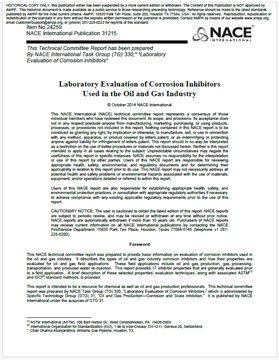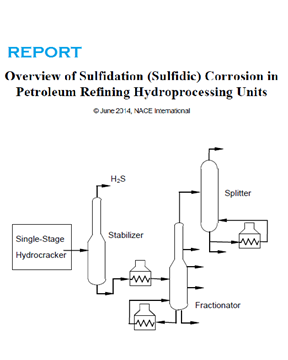Search
Reports
View as
Sort by
Display
per page
NACE Publication 1F 192-2013-SG, "Use of Corrosion-Resistant Alloys in Oilfield Environments"
Product Number:
24010-SG
Publication Date:
2013
$109.00
NACE Publication 21410-SG Selection of Pipeline Flow and Internal Corrosion Models
Product Number:
21410-SG
ISBN:
1-57590-353-9
Publication Date:
2016
$109.00
NACE PUBLICATION 21414-SG (2016 Edition), “Maintenance Overcoating of Railcar Exteriors”
Product Number:
21414-SG
ISBN:
1-57590-363-6
Publication Date:
2016
$109.00
NACE Publication 21428-2018 - Corrosion Inhibiting Admixtures for Reinforced Concrete-A State of the Art Report
Product Number:
21428-SG
Publication Date:
2018
$109.00
NACE Publication 21429-2018-SG - State of the Art Report on Corrosion-Resistant Reinforcement
Product Number:
21429-SG
Publication Date:
2018
$109.00
NACE Publication 30105-2005-SG, Electrical Isolation/Continuity and Coating Issues for Offshore Pipeline Cathodic Protection Systems
Product Number:
24228-SG
ISBN:
NACE Pub 30105
$109.00
NACE Publication 31105-2005-SG, Dynamic Scale Inhibitor Evaluation Apparatus and Procedures in Oil and Gas Production
Product Number:
24225-SG
ISBN:
NACE Pub 31105
Publication Date:
2005
$109.00
NACE Publication 31205-2006-SG, Selection, Application, and Evaluation of Biocides in the Oil and Gas Industry
Product Number:
24227-SG
ISBN:
NACE Pub 31205
$109.00
NACE Publication 31215-2014, “Laboratory Evaluation of Corrosion Inhibitors Used in the Oil and Gas Industry
Product Number:
24259-SG
Publication Date:
2014
$179.00
NACE Publication 34101-2001-SG, Refinery Injection and Process Mixing Points
Product Number:
24215-SG
Publication Date:
2001
$109.00
NACE Publication 34103-2014-SG, Overview of Sulfidation (Sulfidic) Corrosion in Petroleum Refining Hydroprocessing Units
Product Number:
24222-SG
Publication Date:
2014
$109.00












